Dispute handling process and guidelines
I. Dispute submission and negotiation process
During the transaction, the buyer files a refund/return refund application, that is, enters the dispute stage, and must negotiate with the seller to solve it. The process is detailed in the figure below:

The process is detailed:
I. Buyer files a refund/return refund application
1. Reasons for the buyer to submit a dispute:
1) The goods have not been received;
2) The goods received are inconsistent with the agreement;
3) Buyer's own reasons.
2. Time for the buyer to submit a refund: you can apply for a refund 10 days after the seller delivers all the goods (if the time limit set by the seller is less than 5 days, the buyer can apply for a refund immediately after the seller delivers all the goods):
3. Buyer-side operation: In the submission dispute page, buyers can see the options "Only Refund" and "Return & Refund", select "Only Refund" to submit a refund-only application, and select "Return & Refun" d" can submit a return for refund request. After submitting a return for refund/refund only, the buyer needs to describe the problem and the solution and upload evidence. After the buyer submits the dispute, the second child of the dispute will intervene within 7 days (including the 7th day).
II. Transaction negotiation between buyers and sellers
After the buyer files a return/refund application, he needs the seller's confirmation, and the seller can see all the dispute orders on the dispute list page. The quick filtering area shows the status of key disputes: "Dispute in Process", "Buyer has submitted a dispute, waiting for you to confirm", "Awaiting for you to confirm receipt". For disputes that the seller has not responded to, click the "Afcept" or "Refuse and Provide Solutions" buttons to enter the dispute details. The page is as follows:

Entering the dispute details page, the seller can see the time, reason, evidence and negotiation plan provided by the buyer when the buyer files the dispute. When the buyer files a dispute, please accept or reject the buyer's dispute within 5 days of the buyer's dispute. If there is no response within the time limit, the system will automatically execute according to the refund amount proposed by the buyer. It is recommended that you actively communicate with the buyer during the negotiation stage.
Sellers can:
1. Agree to the consultation plan
There are two types of refund requests filed by buyers:
1) Refund only: When the seller accepts it, it will prompt the seller to confirm the refund plan. If the refund application is agreed, the refund agreement will be reached, and the payment will be implemented in accordance with the agreement between the two parties.
2) Return and refund: If the seller accepts it, the seller needs to confirm the receiving address. By default, the address filled in by the seller when registering (all addresses need to be filled in in English). If the address is incorrect, click "Modify the shipping address"
2. Add or modify evidence
3. Add or modify the consultation plan
1.1 Buyers and sellers can provide up to two mutually exclusive schemes (Option 1 submits a return and refund plan, and option 2 can only choose refund-only and non-return option by default).
4. Delete the plan/evidence
Buyers and sellers can delete their own proposals or evidence.
III. Platform Intervention and Consultation
After the buyer submits the dispute, the second child of the dispute will intervene within 7 days (including the 7th day). The platform will refer to the case situation and the certificate provided by the negotiation stage between the two parties to give the plan. Buyers and sellers can see the buyer, seller and platform's plans on the dispute details page. In the process of dispute handling, the cause, plan and evidence of the dispute can be modified independently at any time (before the end of the case, if the buyer and seller are not satisfied with the plan, evidence, etc. he has provided before, he can modify it at any time). If the buyer and seller accepts the plan given by the other party or the platform, he can click to accept the plan. At this time, the two parties reach an agreement on the same plan and the dispute is completed. In the state of compensation completed in the dispute, the buyer and seller can no longer negotiate.
II. History of disputes
The history of the dispute is displayed in the form of a timeline.
III. Return process
If the seller and the buyer reach an agreement to refund and return the goods, the buyer must send the goods within 10 days (otherwise, the money will be sent to the seller). After the buyer returns the goods and fills in the return waybill number, the seller has a 30-day confirmation time to receive the goods. If you are not satisfied with the goods received, you can directly submit the order to the dispute platform. The dispute department will contact both parties to follow up. ( Note: After the buyer returns the goods, the seller needs to confirm the receipt or file a dispute within 30 days. If the buyer fails to operate within the time limit, the seller will receive the goods by default and perform the refund operation.)
If the buyer has returned the goods and filled in the return form number, he needs to wait for the seller to confirm (as shown in the figure below):
The seller needs to confirm the receipt of the return within 30 days:
a) If you confirm receipt of the return and agree to the refund, click the OK button, and AliExpress will refund the buyer (the seller's operation page is shown in the figure below)
The seller confirmed the receipt of the goods and the dispute was completed.
b) If the seller does not receive the return within nearly 30 days, or there is a problem with the return received, the seller can click "Escalate Dispute" to submit it to the platform for dispute adjudication (the operation page is shown in Figure 1 below), and the platform will intervene within 2 working days. The seller can check the status and ring on the dispute page. Should. During the platform award, the seller can also click "candone arbitration" to set aside the dispute award (the operation page is shown in Figure 2 below);
c) If the seller does not do anything within 30 days, that is, does not confirm the receipt of the goods and does not submit a dispute ruling, the system will default that the seller has received the return and automatically refunds it to the buyer.
Overseas Warehouse Local Return
After the two parties agree to return the goods, if the order supports local return, the platform will display the return address.
After confirming receipt, the dispute is completed.
IV. Worry-free logistics disputes
For orders shipped by worry-free logistics, after the buyer initiates a dispute over not receiving the goods, the seller does not need to respond, and the platform directly intervenes to verify the logistics status and determines the responsibility.
Reminder: Disputes caused by non-logistics problems still need to be handled by the seller themselves.
Friendly Link: AliExpress Rules ChannelFriendly Link: AliExpress Rules Channel
Dispute handling process and guidelines
III. Guidelines for Adjudication of Disputes
AliExpress's disputes over seller liability mainly come into two categories: disputes arising from the buyer's failure to receive the goods and disputes caused by the buyer's receipt of the goods but the goods do not conform to the agreement. This article explains what sellers need to do and the risks they need to take in various dispute decisions, hoping to give seller some guidance in the handling of disputes and cooperate with sellers to complete dispute decisions.
Category I Disputes over the buyer's failure to receive goods
I. For details of seller protection policies, please refer to:
http://seller.aliexpress.com/education/rules/detail.html? tracelog=rules_homepage#Logistics
2. AliExpress will not support sellers to provide evidence if the dispute order that has not been received involves any of the following situations:
1. Disputes cannot query valid logistics information on the following logistics websites
Postal Logistics: National Postal (Air Transport)
Commercial Express: UPS, DHL, FedEx, TNT, TOLL, SF Express
Special Line Logistics: Middle East Special Line (Aramex), China-Russia Special Line (Finland Post Economic Package, Suyoubao Finland Post,
China-Russia Special Line, 139 Russia Special Line, SPSR, China-Russia Airlines Ruston, Russia Passepartout Pickup Service,
Sino-Russian Express-SPSR), Sino-Foreign Transportation-Western Post Economic Package, Airline-Yanwen.
Others: Express, 4PX, Beiyoubao, DPD, GLS, Huahan Logistics, Envialia, JNE, aCommerce, Bpost,
Jetnet-Russia Quantong
2. The first logistics record displayed in the completed waybill number is earlier than the buyer's ordering time.
III. Principles for Handling Disputes of Non-receipt Goods
1. Check whether there is any logistics information
Definition: The waybill number filled in by the seller cannot be found on the logistics website.
Principle: If the seller does not provide a valid waybill number within the specified time, AliExpress will refund the full amount.
Seller's proof: Sellers need to provide a valid waybill number within 3 calendar days from AliExpress notice proof.
Suggestion: Fill in the correct waybill number after the seller's goods are sent out; pay attention to the logistics status, and update the transfer number in time if there is a transfer number; in case of abnormal situations, the master in time
Communicate with buyers and logistics companies and solve them as soon as possible.
2. Logistics shows that it has been properly put into operation
2.1. The logistics delivery address matches the buyer's order address
Definition: Logistics information shows that the logistics is properly invested, and the country of logistics is the same as the country where the buyer places the order, the province, city, zip code, and signature
If people are displayed on the official website, they also need to be consistent.
Principle: If the logistics delivery address matches the buyer's order address, AliExpress will lend money to the seller.
2.2. The logistics delivery address does not match the buyer's order address.
Definition: The logistics information shows that it has been properly invested, but the logistics information is inconsistent with the buyer's order address.
Principle: If the seller fails to provide valid proof within the time limit, AliExpress will refund the full amount to the buyer.
Seller's proof: If the buyer requests to modify the address, the seller needs to provide a communication record.
Suggestion: If the seller uses online delivery and the address is correct, the seller can initiate a complaint about online delivery. Details
http://seller.aliexpress.com/so/onlinelogistics_dispute.php.
3. Logistics shows that the goods have not been properly delivered
3.1. Goods are at customs
Definition: Logistics information shows that the goods are at customs and detained due to customs requirements of the importing country. Reasons involved in customs detention
Including but not limited to the following reasons:
1) The importing country has restrictions on the import of goods;
2) The buyer is unwilling to clear customs due to excessive tariffs;
3) The ordered goods are fake, imitated and contraband;
4) The declared value of the goods does not match the actual value;
5) The seller is unable to issue the relevant documents required by the importing country;
6) The buyer is unable to issue the relevant documents required by the importing country;
Principle: The buyer proves the customs deduction document. If the document shows that the seller's reason is the customs deduction, and the buyer is unable to retrieve the goods, AliExpress will refund it.
Buyer; If the document shows that the buyer's reasons cause customs deduction, and the buyer has the obligation to clear customs, AliExpress will lend money to the seller.
Seller's proof: If the seller's customs is detained due to the seller, the seller is obliged to provide the corresponding materials to help the buyer clear customs, including but not limited to
In terms of brand authorization certificates, commercial invoices, etc., sellers need to actively cooperate with the response in disputes and provide the materials needed for customs clearance.
Suggestion: The seller fully understands the relevant customs policies before selecting the goods and shipping.
http://bbs.seller.aliexpress.com/bbs/read.php? tid=21832.
3.2. The goods are in transit
Definition: Logistics has tracking information, and the tracking information shows non-customs, non-proper delivery, non-return situations, but the buyer does not receive the goods for delivery.
Refund request started.
Principle: If the time limit is exceeded, AliExpress will refund the buyer.
Suggestion: If the time limit is not due, the seller will actively communicate with the buyer; the seller shall try his best to use the logistics party with strong traceable information and high timeliness.
Type, such as commercial express delivery, online delivery; the seller sets a reasonable time limit.
4. Logistics shows that the original goods are returned
Definition: Logistics has tracking information, and tracking information shows that the goods have been returned.
Principle: AliExpress will refund the payment of the goods to the buyer, and the freight of delivery and return will be judged according to the specific situation of the order and the buyer's cause.
Responsibility.
Seller's proof: Within 3 natural days from AliExpress notifying the seller of proof, the seller needs to provide proof that the goods cannot be properly delivered due to buyer reasons.
Ming, such as the order inspection results of the logistics company, the email certificate issued within the logistics company, the chat history with the buyer, etc.
Suggestion: Check the receiving information before the seller sends the goods to ensure that the information is correct; pay attention to the logistics status in time after the goods are sent, in case of abnormal situations and
Take the initiative to communicate with buyers and logistics companies and solve them as soon as possible.
5. The seller changes the logistics method without permission
Definition: Without the buyer's permission, the seller uses different logistics methods selected when placing an order with the buyer to deliver the goods.
Principle: The seller shall bear the corresponding responsibility; if there is a price difference in logistics costs, the seller shall bear it.
Seller's proof: Within 3 natural days from AliExpress notifying the seller to provide evidence, the seller needs to provide the buyer's request or agree to change the logistics party before delivery.
Type of evidence, such as communication records with buyers.
Suggestion: Do not change the logistics method without the buyer's consent; if the buyer requests or agrees to change, the seller retains the relevant certificate.
Category II Disputes over the buyer's receipt of goods and inconsistent with the agreement
1. The goods do not match the description class
Definition: There is a gap between the goods received by the buyer and the seller on the corresponding product details page of the website, and there is a gap in color, size, product packaging, brand, style/model, etc.
Color mismatch means that the color of the goods received does not match the product description (picture, description).
Size discrepancy means that the size of the goods received does not match the product description.
Product packaging discrepancies refer to the inconsistency between the inner packaging of the goods received and the description (no packaging, packaging discrepancies, broken packaging and stains), and product packaging refers to all packaging of the product itself (except for the outer packaging used by post offices and sellers).
Brand mismatch means that the brand of the goods received does not match the description.
Style/model discrepancy means that the model/model of the goods received does not match the product description (picture, description). Model/style refers to: the performance, specifications and size of the product.
What sellers need to do in the face of dispute adjudication:
The product description is subject to the product description displayed by the seller on the Global AliExpress platform. The seller needs to ensure that the description information of the product (including product title, product detailed description page, etc.) is consistent. If there is a contradiction or misleading tendency, the platform reserves the final right to adjudicate the dispute. If the seller has clearly reminded the buyer that there may be a color deviation in the product, or there may be some error in the product before the buyer places the order, and the size of the error is clarified, the seller shall provide a communication record of the relevant prompt as proof within 3 days from the notice issued by AliExpress.
Risks that sellers need to take:
1) If the seller's product title, picture and description clearly indicate the product model, the default is that the product has all the functions of the model. If the buyer complains about the lack of a certain function, the seller will bear full responsibility;
2) According to the proof of the buyer and seller, if the goods do not match the description, it is the seller's responsibility. The buyer has the final choice of the handling method, and the buyer can choose a refund plan or a return plan.
3) If there are multiple models and colors on the product page, but the buyer cannot choose the model and color when placing an order, and leave a message indicating that one of them needs to be selected. If the wrong color is sent later, the seller will bear full responsibility;
Note: If the buyer and seller reach an agreement on return and refund before the dispute is settled, the platform will support the agreement between the two parties and require the buyer to return the goods. For cases where the product does have a problem of wrong goods, it is recommended that the seller bear the freight return.
2. Quality problems
Definition: The goods received by the buyer have quality and usage problems, such as the inability of electronic equipment to work, poor quality of the product, etc.
Risks that sellers need to take:
According to the proof of the buyer and seller, if there is a quality problem with the goods, it is the seller's responsibility. The buyer has the final choice of the handling method, and the buyer can choose to refund part or return it.
Note: It is recommended that the seller ensure the quality of the goods and maintain communication with the buyer to solve problems in a timely manner.
3. Selling fake goods
Definition: After receiving the goods, the buyer initiates a refund because the goods are infringing counterfeit products or suspected of infringing counterfeit products. According to the rules of the platform and the verification results, it is divided into two situations:
1) Minor sales of counterfeit goods: the infringing counterfeit products or suspected of infringing counterfeit products sold by the seller do not involve the well-known brand list published by the platform;
2) Serious sale of counterfeit goods: the infringing counterfeit products or suspected of infringing counterfeit products sold by the seller involve the well-known brand list published by the platform.
What sellers need to do in the face of dispute adjudication:
The seller needs to provide authorization licenses and sales licenses within 7 days from AliExpress notifying the seller to provide proof.
Risks that sellers need to take:
1) According to the proof of the buyer and seller, if the seller's product is an infringing product, the seller will bear all the risks. The platform will first refund the full amount of the order to the buyer, and the seller needs to contact the buyer to retrieve the goods by himself;
2) At the same time, Alibaba has the right to punish sellers according to AliExpress platform's issuance of infringing product management rules and punishment rules and other applicable platform rules.
Note: Do not sell counterfeit and infringing products on the platform. If the buyer complains that the product is counterfeit and infringing products, the seller will bear all the risks. Even if the buyer buys knowingly, the seller will bear all the responsibility.
4. Virtual products
Definition: Products without physical transactions, such as software key.
Risks that sellers need to take:
1) Once the buyer complains that the product sold by the seller is a virtual product, the order will be cancelled and the full refund will be given to the buyer;
2) At the same time, Alibaba has the right to issue product management rules and other applicable platform rules that are not suitable for the platform to punish sellers according to AliExpress platform.
Note: Do not sell virtual products on the platform. If the buyer complains that the product is a virtual product, the seller will bear all the risks, and even if the buyer knowingly buys, the seller will bear all the responsibility.
5. Short-loading of goods
Definition: The quantity of goods received by the buyer is less than the quantity agreed upon on the order.
What sellers need to do in the face of dispute adjudication:
Calculate from the time AliExpress notifies the seller to submit relevant supporting materials, and provide the delivery receipt and weight description within 3 days.
Including:
1. Weight photos of a single product;
2. The whole product plus a picture of the weight of the package;
3. The delivery receipt and the package weight certificate issued by logistics. Risks that sellers need to take:
According to the certificate provided by the buyer and seller, if the goods are short-loaded, or the seller does not provide a certificate that there is no short-loading within the time limit, according to the share of the total amount of the order, part of the order amount will be refunded to the buyer, that is, the amount corresponding to the number of short-packed parts of the order will be refunded;
Note:
1) The seller shall retain the weight proof at the time of delivery, such as weighing photos or video records;
2) Pay attention to the sales method when releasing products, and do not confuse the difference between piece and lot.
6. Damaged goods
Definition: The goods received by the buyer have varying degrees of outer packaging (limited to the product's own packaging (such as the outer packaging of mobile phone products), except for the post office, the overpack used by the seller), or the product itself is damaged.
Risks that sellers need to take:
If the buyer or logistics company provides valid evidence that the seller's responsibility caused the damage to the goods, the full amount of the order will be refunded to the buyer.
Note: It is recommended that the seller fully check the status and packaging of the goods before delivery, communicate with the buyer in time during the transaction process and solve problems.
7. Return the goods after the buyer receives them
Definition: refers to the return of the goods after the buyer receives the goods and reaches an agreement between the buyer and the buyer, or the buyer returns the goods without negotiating with the seller.
What sellers need to do in dispute adjudication:
The seller needs to confirm with AliExpress in time whether to receive the return.
Risks that sellers need to take:
If the buyer's return cannot be properly placed due to seller reasons, the order amount will be refunded to the buyer in full. Therefore, it is recommended that after the buyer provides the return order number, the seller can track the logistics information in real time.
Note: It is recommended that sellers leave a valid return address and information in AliExpress account number and invoice to ensure that the goods can be received when returning the goods and avoid losses.
If the buyer returns the goods to the Chinese customs, because customs clearance is the responsibility of the recipient, the seller needs to actively clear customs, or provide customs clearance documents that cannot be cleared due to the buyer's reasons, otherwise the order will be refunded according to the buyer's requirements.
If the goods arrive in the seller's city and then return to the buyer, the seller needs to provide the corresponding post office instructions to prove that the goods are returned for non-excessive reasons, otherwise the order will be refunded according to the buyer's requirements.
If the buyer does not negotiate with the seller to return the goods by himself, AliExpress will require the buyer to provide the reason for the return and relevant certificates. If the buyer is unable to provide it, the seller has the right to refuse the buyer's return, and AliExpress can also refuse to refund the buyer.
8. The seller changes the logistics method without permission. Definition: The seller changes the logistics method chosen by the buyer when placing an order without the buyer's permission.
What sellers need to do in disputes:
The seller needs to provide a screenshot of the chat history that obtains the buyer's consent before changing the logistics method.
Risks that sellers need to take:
If the seller changes the logistics method without permission, and when the goods arrive at the customs of the buyer's country, the buyer cannot clear the customs, which is the seller's responsibility. AliExpress platform will operate the refund according to the buyer's requirements.
If the order is charged for logistics and the seller changes the method without permission, the freight amount of the order will be refunded to the buyer.
If the seller changes the logistics method and the goods cannot be properly delivered at the designated place, the buyer needs to pick it up at a faraway place, which is the seller's responsibility and needs to compensate the buyer for the additional freight. If the buyer cannot be properly invested, it is the seller's responsibility.
If the buyer delays receiving the goods due to the seller's private change of logistics methods, it is also the seller's responsibility. AliExpress platform will calculate the refund amount according to the specific delay date.
9. Seller forced delivery (default of contract) Definition: Due to the seller's delay in delivery and cannot meet the buyer's requirements for delivery or arrival, the buyer initiates to cancel the order after placing the order (it is necessary to confirm whether the buyer has cancelled the order in the system) / or the buyer's refund is the first time when the waybill number provided by the seller is displayed. Before the logistics information, the seller still insisted on delivering the goods, and then the buyer filed a dispute over the seller's forced delivery.
What sellers need to do in disputes:
Provide the logistics order number to prove that the goods have been shipped before the buyer cancels the order, and there is logistics information.
Risks that sellers need to take:
After the seller forcibly delivers the goods, if the customs detains the package in the logistics and transportation process, the buyer refuses to sign, etc., it is the seller's responsibility.
Friendly Link: AliExpress Rules Channel
Dispute handling process and guidelines
IV. How to avoid and resolve disputes
Buyers file disputes for various reasons, which not only we want to solve disputes, but also have a great impact. In this regard, buyers may have doubts or even doubts about suppliers, products, AliExpress platforms, and the final result will make the repayment cycle of the order longer, and the potential result will make the sale The source of domestic customers will be lost, and the opportunity for secondary trading may be lost.
In the process of trading, we should try our best to avoid disputes. If disputes really occur, they can be solved smoothly and satisfy buyers. These will retain customers for us and have a word-of-mouth effect, winning more customers.
I. How to effectively avoid disputes
There are two main types of disputes raised by buyers, "wrong version" and "not received". Our response to these two categories is as follows:
the wrong version
1. The product description is true and comprehensive
When editing product information, it is important to describe the product comprehensively and carefully based on facts:
● For example, electronic products need to give a comprehensive description of the product functions and usage methods to avoid disputes caused by buyers who cannot use them reasonably after receiving the goods.
● For example, it is recommended to provide size sheets for clothing and footwear products so that buyers can choose and avoid disputes over inappropriate sizes after receiving the goods.
● Buyers should not be deceived by rushing to conclude transactions. For example, USB flash drives that actually only sell 2G capacity deliberately describe the capacity size as 256G. Once such fraud is verified, AliExpress platform will seriously deal with it.
● The defects and defects of the product should not be concealed in the product description.
● It is recommended to indicate your shipping method, delivery area, and expected transportation time in the product description. At the same time, it is also recommended to explain to the buyer the customs clearance and payment, product return responsibility and bearer.
Buyers are based on the description of the product. The more buyers know, the closer their expectations will be to the physical object. Therefore, a true and comprehensive description is the key to avoiding disputes.
2. Strictly control the quality
Before delivery, the product needs to be fully tested: whether the appearance of the product is intact, whether the function of the product is normal, whether the product is short-packed, whether the packaging when the product is mailed is compressive and fall-resistant and suitable for long-distance transportation, etc. If you find product quality problems, you should contact the manufacturer or upstream supplier in time to replace them to avoid returning or exchanging goods due to disputes. The transportation cost of returned goods in foreign trade transactions is extremely high.
3. Eliminate fake goods
AliExpress has always been committed to protecting third-party intellectual property rights and providing a safe place for members to trade. It is illegal to illegally use other people's intellectual property rights and violate AliExpress's policies.
If the buyer files a dispute and complains that the seller "sells fake goods", and the seller is unable to provide the authorization certificate of the product, the AliExpress platform will directly rule that the seller is fully responsible, and the seller will also be punished by the relevant rules of the platform while suffering economic losses. Therefore, it is important not to sell products that involve third-party intellectual property rights and cannot provide proof of authorization on the AliExpress platform.
Goods not received
1. Logistics selection is very important
International logistics often has many uncertainties, such as customs issues, tariff issues, delivery and transshipment, etc. These complex situations are difficult to control throughout the transportation process, and it is inevitable that there will be delays in customs clearance of parcels, timeouts in delivery and even loss of parcels. For buyers, being unable to receive the goods for a long time or not being able to query logistics updates will directly lead to disputes.
At the same time, express delivery without tracking information is also not guaranteed for the seller's interests. When the buyer raises a dispute over "not received goods", and the inability to track the goods information, it is very unfavorable for the seller to prove. Therefore, we suggest that when you choose the express delivery method, you can combine the customs clearance capacity of different regions and different express companies and the transportation period of the package, and choose EMS, DHL, FEDEX, UPS, TNT, SF and other logistics information to update more accurately and have better transportation timeliness. These fast Compared with airline packages, the risk value will be much lower.
Considering the actual situation, if you need to find a freight forwarding company to help deliver the goods, please give priority to a formal freight forwarding company that can provide both delivery and return protection to ensure that your interests are not harmed to the greatest extent.
Generally speaking, when choosing the express delivery method, please be sure to weigh the risks and costs in the transaction, and choose a courier company that can provide real-time query of cargo tracking information as much as possible.
2. Effective communication
● If the package is delayed, please inform the buyer in time to explain the reason why the package could not be reached within the expected time, and obtain the buyer's understanding.
● If the package is withheld due to non-payment of customs duties, please inform the buyer in time and declare that you have indicated the buyer's tax payment obligation in the product description. You may as well propose to share some customs duties with the buyer at this time, which can not only avoid the return of the goods, but also allow the buyer to give you a high score in good faith.
● If the package is temporarily stored at the post office because no one signs for it, please remind the buyer to find the note left by the post office in time and pick it up within the validity period.
● Handle the buyer's inquiry about the item that has not been received in time, so that the buyer can experience your attentive service.
● In the process of trading, maintaining effective communication with buyers can not only make the transaction complete smoothly, but also win the buyer's second favor.
II. How to solve disputes arising
1. Compare your heart to heart
● Think from the perspective of the buyer and find a way to solve problems together, not just consider your own interests.
● "Don't do to others as you want to do it to yourself". No one is willing to bear losses for no reason. As sellers, we can try our best to let buyers reduce losses within a certain range of tolerance and win more opportunities for ourselves.
2. Effective communication
● Timely response: If the buyer is not satisfied, respond immediately and negotiate friendly with the buyer. If the goods are not received for a long time, the goods or other alternatives can be resent to the buyer within the scope of tolerance; if the buyer is dissatisfied with the quality of the goods or other things, negotiate friendly with the buyer and consider them in advance. Solution.
● Communication skills: Pay attention to the psychological changes of the buyer when communicating with the buyer. When the buyer is not satisfied, try to guide the buyer to move in the direction of retaining the order, and also meet some other needs of the buyer. When a refund occurs, try to guide the buyer to achieve a partial refund to avoid full refund and return. Strive to make "although the goods cannot satisfy the buyer, the attitude should also make the buyer impeccable".
3. Retain evidence
:: Valid information in the transaction process can be retained and used as evidence to help solve the problem if there is a dispute;
● During the transaction process, it can provide timely and sufficient evidence, provide relevant information to buyers for negotiation, or provide AliExpress to help adjudicate.
The dispute is not terrible. As long as the seller is fully prepared and everything is aimed at buyer satisfaction, there will definitely be good results.
Case sharing:1. How to inquire about the return information of the original package
2. Dispute Case Sharing - Customs Detainment
3. Buyer returns goods after receiving them
4. Inaccurate delivery address
The definition of accurate matching is that the time, city, zip code, signer, etc. are consistent. If the logistics information cannot be displayed to accurately match the delivery, for example, Spain only shows the country, and the buyer has always said that the goods have not been received after the logistics is completed, and the seller needs to provide a delivery receipt to confirm whether the shipping address is consistent, so please keep the delivery receipt so that the platform can check whether the shipping address is correct.
5. Australian small package inquiry method
6. Argentine package inquiry method
7. What to do if you encounter a dispute in AliExpress transactions
Friendly Link: AliExpress Rules Channel
Friendly Link: AliExpress Rules Channel

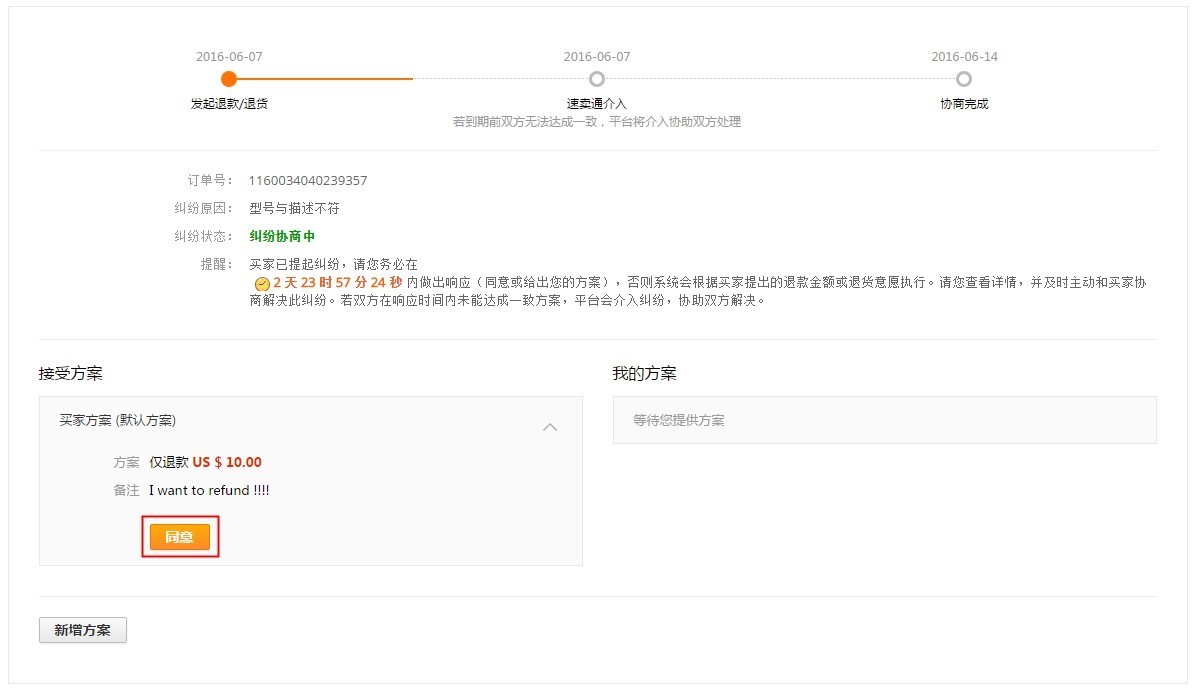
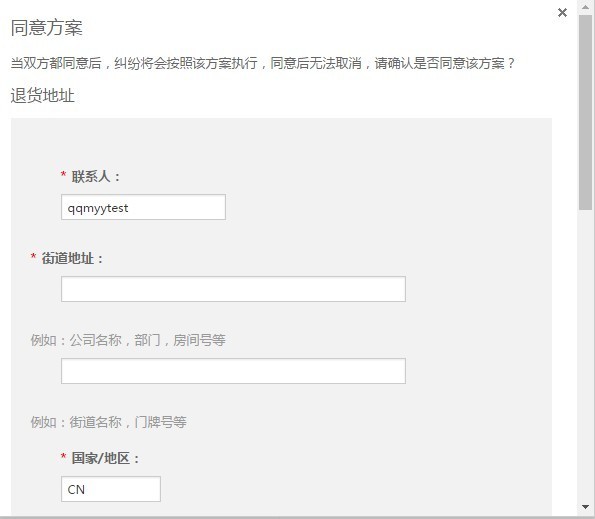
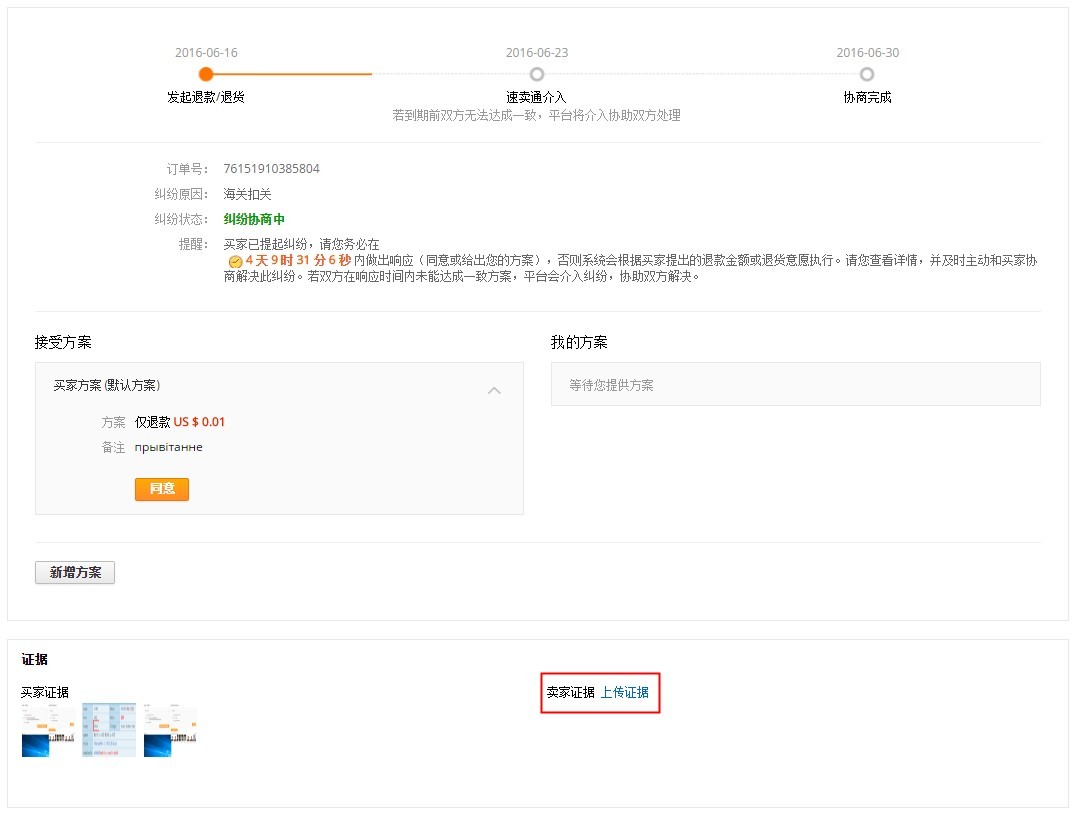
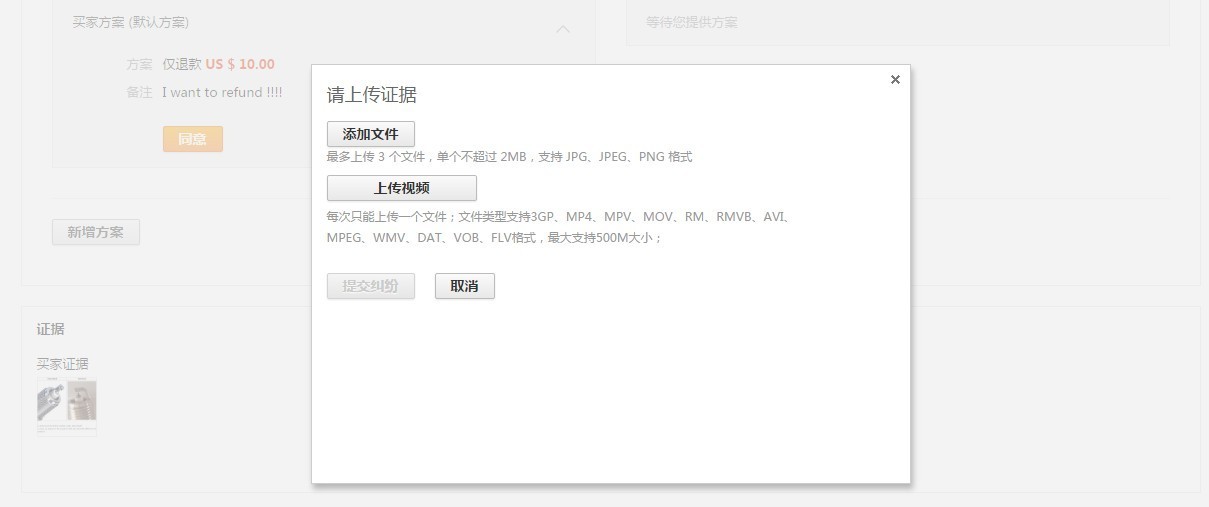
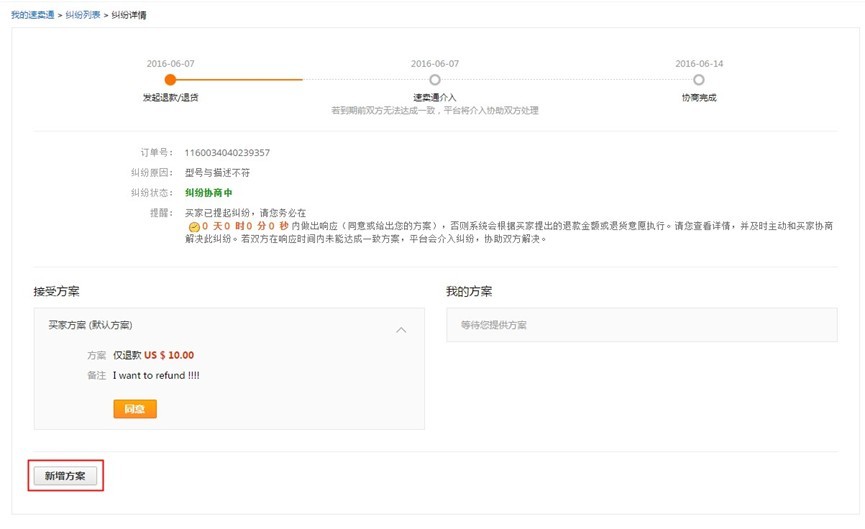



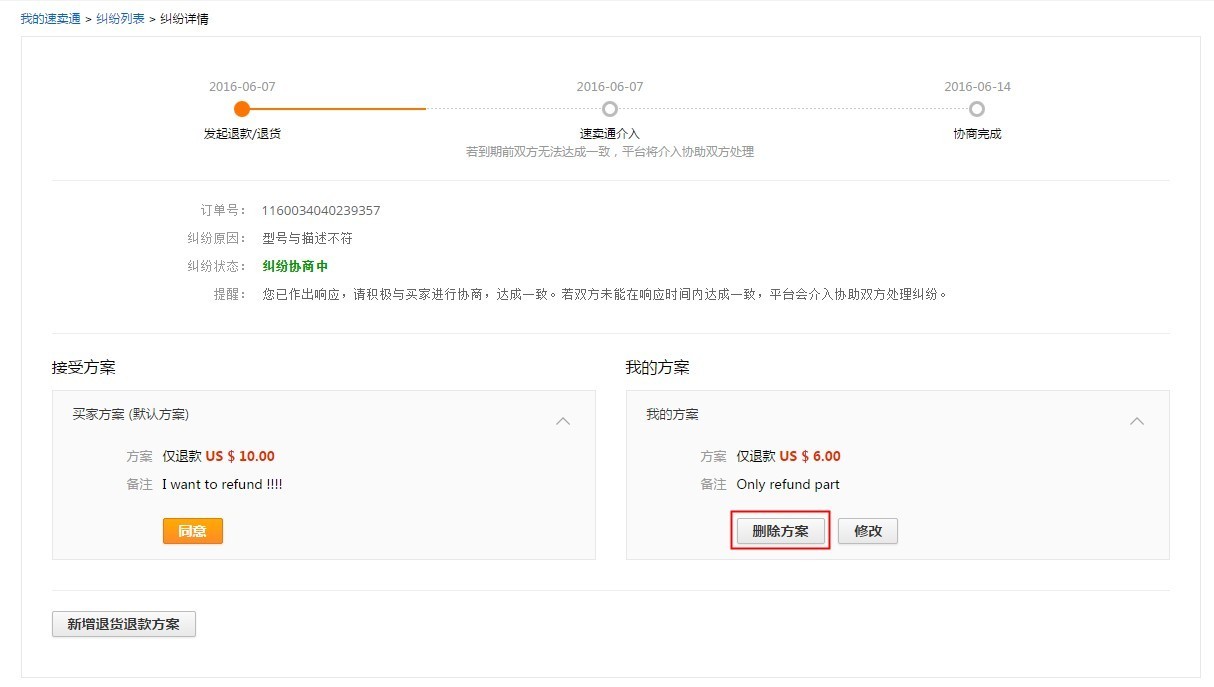


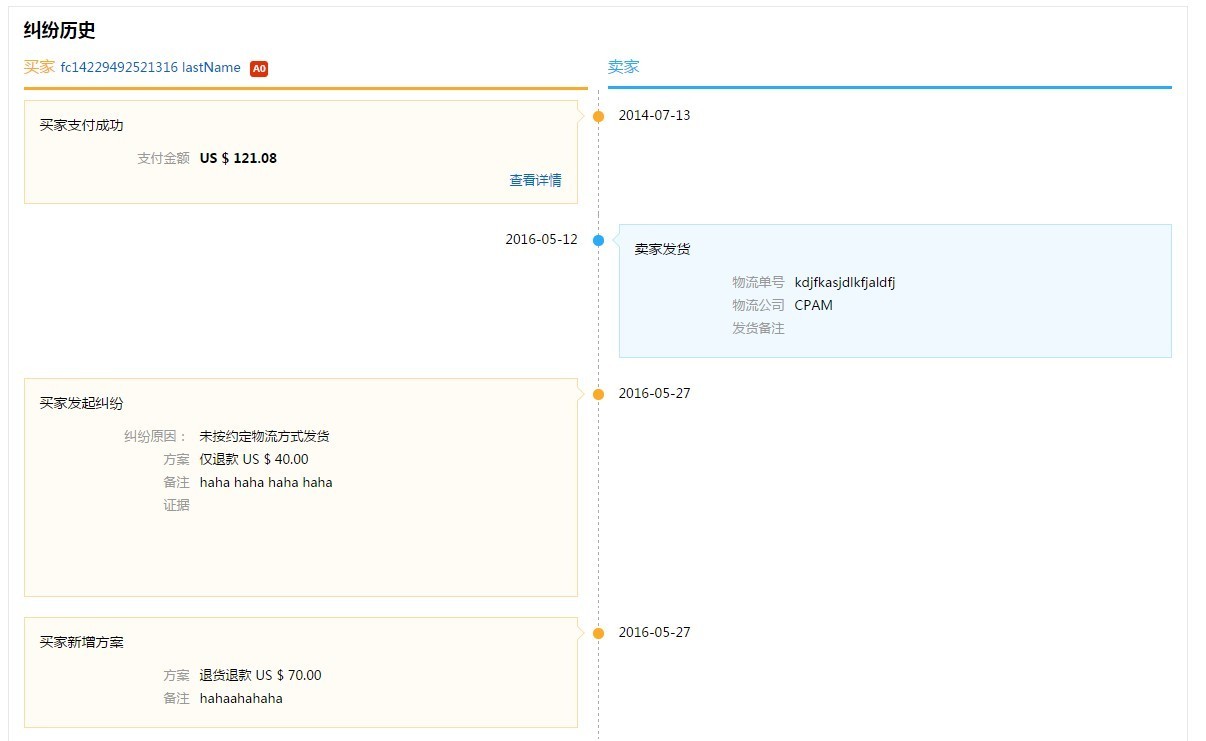



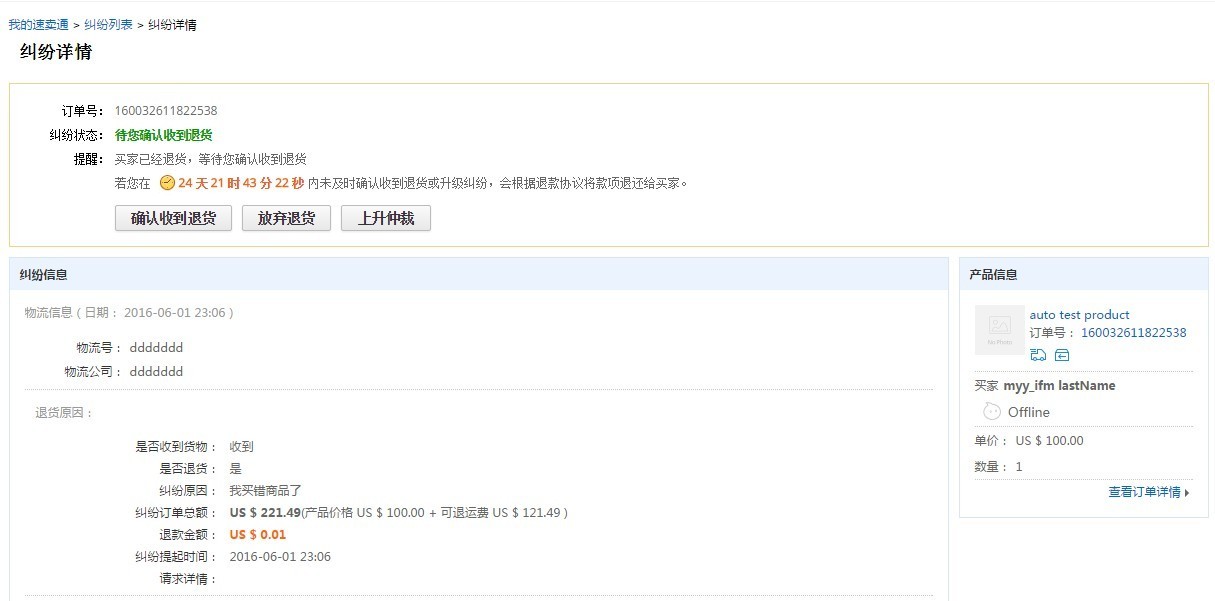

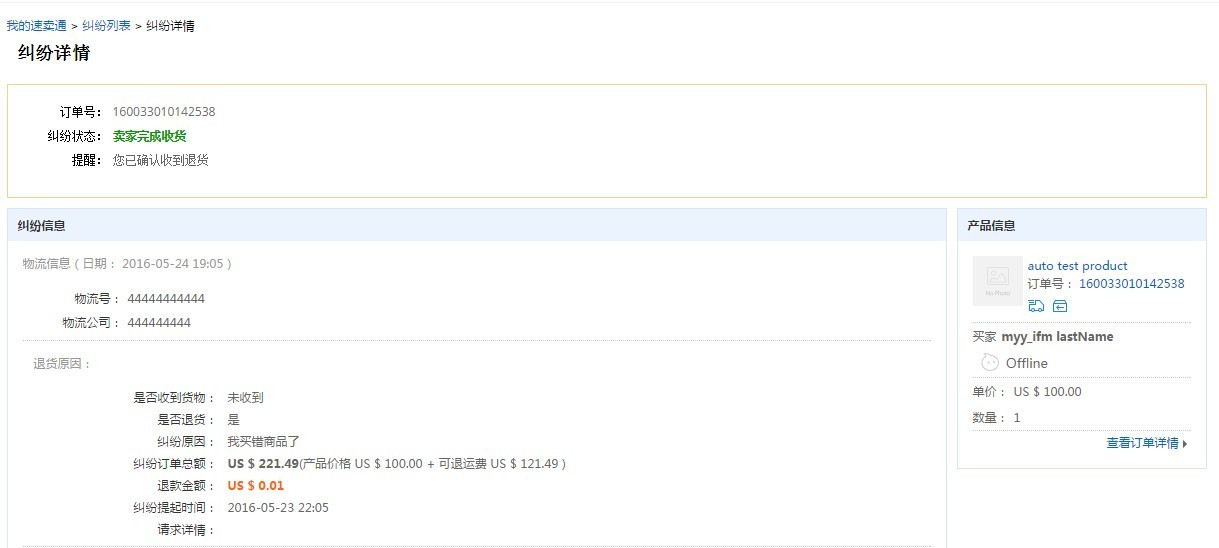
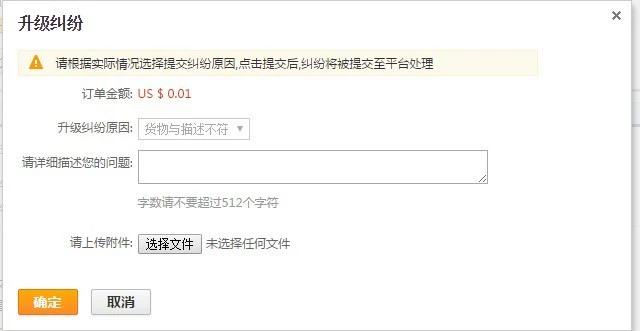

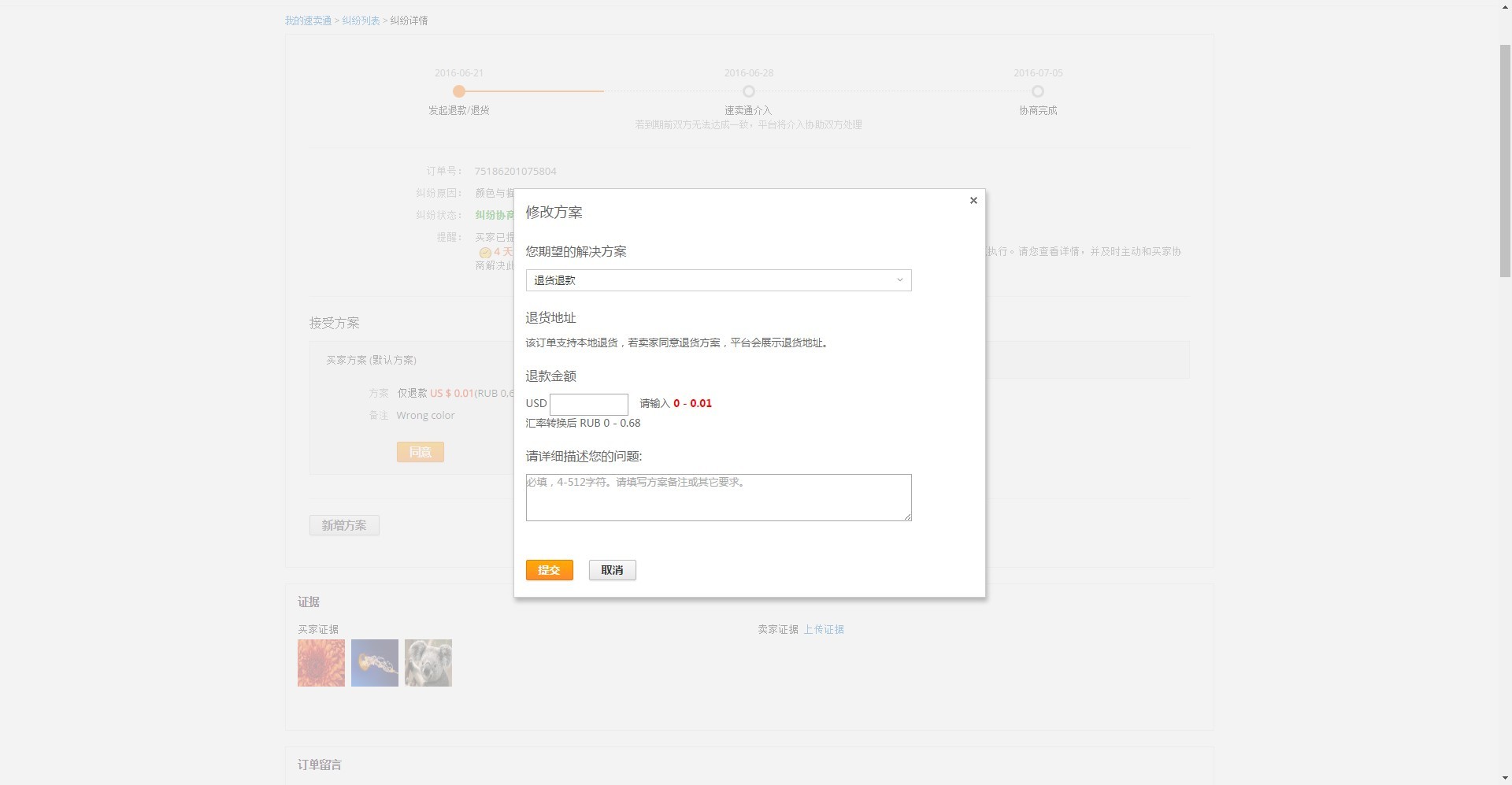
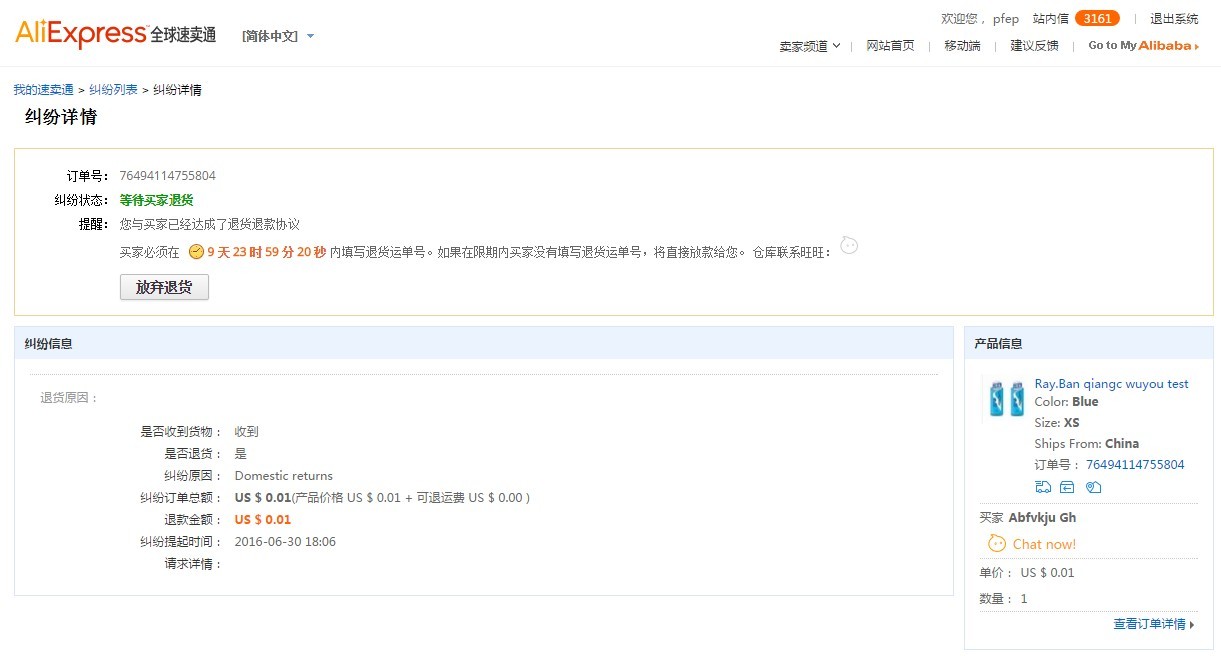
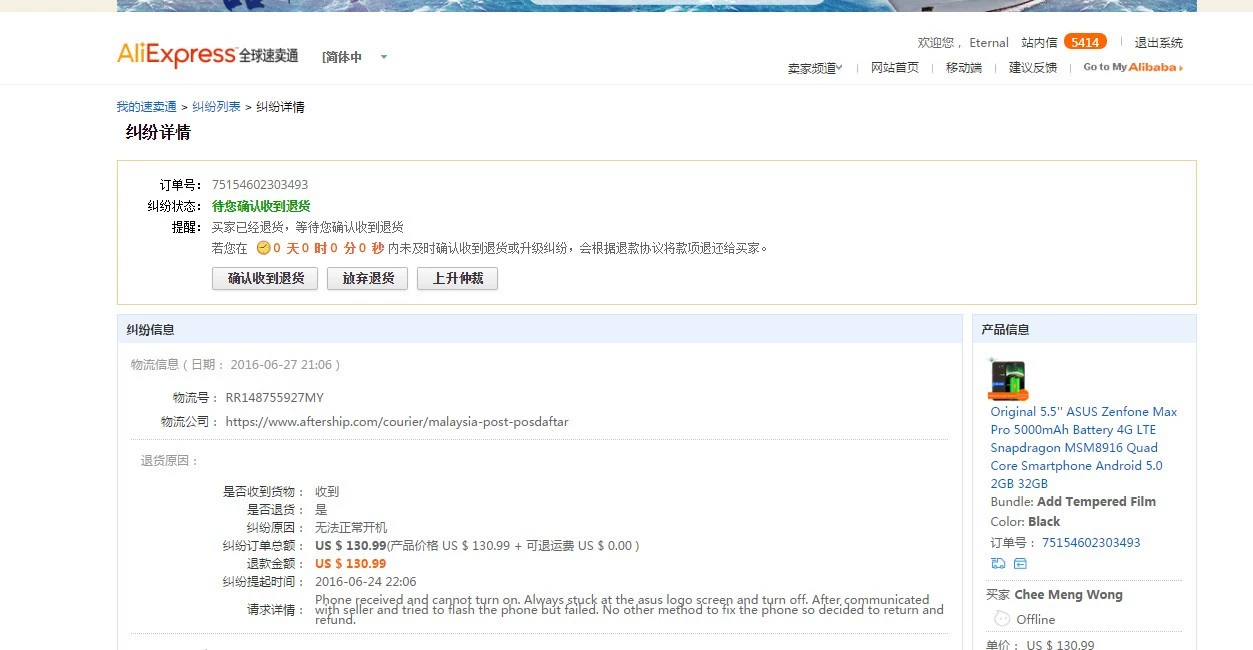
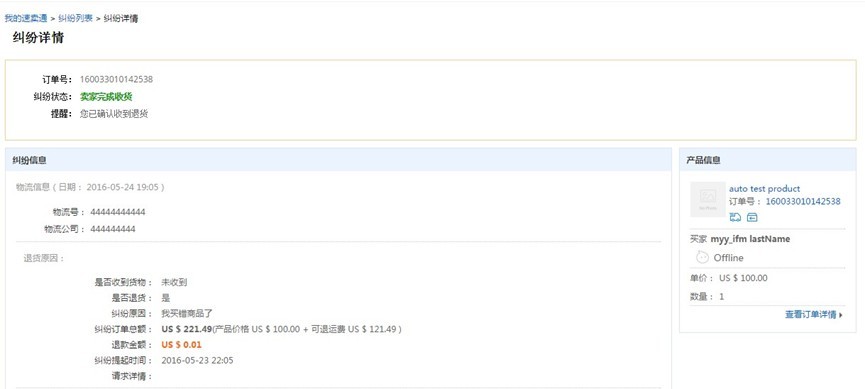



Comments
Post a Comment